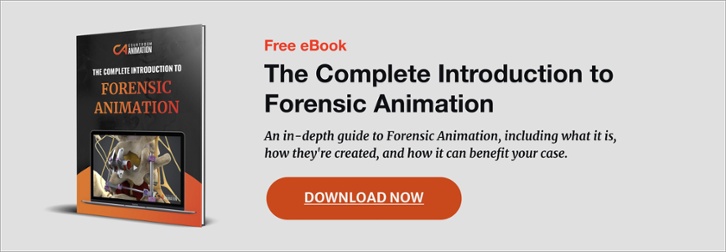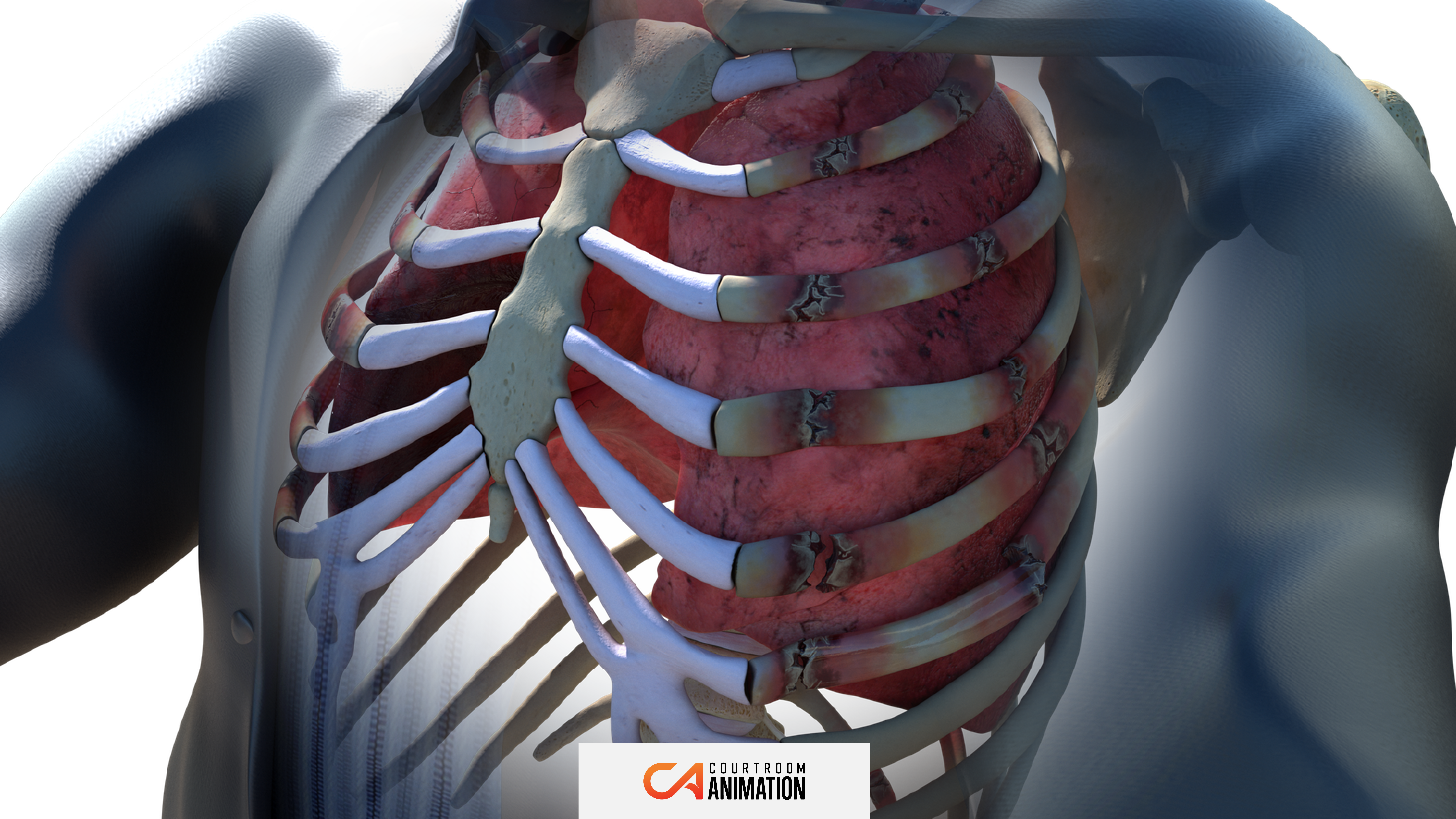
Forget about your “case,” and start telling a story. The power of storytelling lies at the core of virtually every case and should be utilized throughout every stage of litigation.
No matter where you are in the life cycle of litigation, it is your job to empower your audience and motivate them to action.
But when it comes to complex cases, like personal injury or accident reconstruction, compelling your audience isn’t always easy. Unlike you, your client and your expert witnesses, your audience – be it a mediator, judge, or jury – will have a cursory understanding of your case.
Jargon, medical terms and professional indifference will interfere with your ability to connect with the jury.
That means that it will be harder for them to follow and retain the key details that can determine the outcome of your case.
To achieve the best outcome, you need to connect with your audience and create empathy for your narrative. By fostering this connection, you have a better chance of gaining a favorable outcome in every stage of litigation.
A compelling narrative has a hero, a scene, and a unique perspective, which creates a memorable image in your audience’s mind. To reach this mental image faster and be memorable, winning attorneys leverage visual solutions. Legal graphics and animations, in particular, can help your audience connect with your case, remember it, and understand the nuances within.
“A case, when presented only as a set of facts, is as good as lost.”
Twelve Heroes, One Voice: Guiding Jurors to Courageous Verdicts, Carl Bettinger
This narrative is important, no matter if your case is in pre-litigation, mediation, trial, or appeals. And because legal graphics support this narrative, the popular misconception that legal graphics are primarily (or only!) used for trial is inaccurate.
The truth is that they are actually impactful during every stage of litigation. Yes, litigation graphics can benefit your case before it’s even filed! Read on to learn about why you might want to consider using them in your case, no matter what stage it is in.
Legal Graphics in Pre-Litigation
While not as commonly thought of as mediation or trial tools, legal graphics also provide attorneys with an ace up their sleeves before litigation begins. They do this by providing two main benefits:
- Analyze initial data & client perspectives
- Refine your case’s story with focus group feedback
Before you can finalize a narrative for your case, it’s important to understand the data and facts that make up the meat of the story.
Analyze initial data & perspectives
At the beginning of a civil case, there are many data sets that need to be collected and analyzed in a short period of time. Depending on the incident, this data can include documents, medical records, police reports, and witness statements.
Curious how much legal graphics cost? Download our free pricing guide and find out!
These incidents, whether the focus is on a car accident or a medical malpractice claim, can be quite complex. A graphic unravels these complexities and helps an attorney better understand their client’s situation. Additionally, it can help prove (or disprove) what your client says happened.
In a real world example of this, a car crash took place over a bridge in a sandstorm. It was in dispute whether the driver, who collided into another vehicle, saw the environmental hazard and had enough time to make a different decision. The resulting car crash animation, created from analyzing four different expert data sets, helped prove that the driver must have seen the storm.
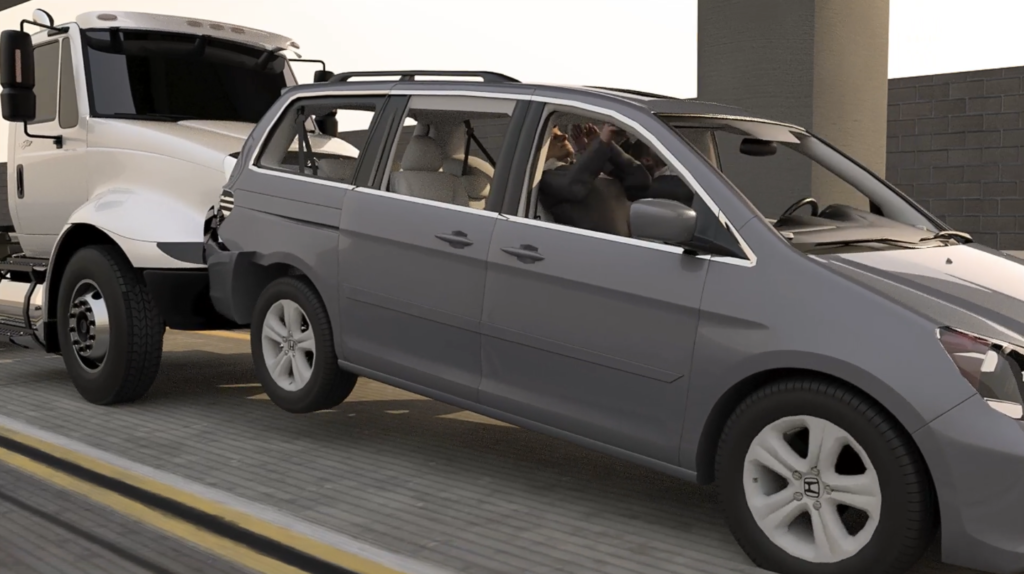
Sample Accident Reconstruction Animation from Courtroom Animation
This form of imagery could reinforce what your client claimed and provide you with an idea of what amount you could include in your demand letter. However, if it disproves your client’s statement, then you know that the opposing counsel might have an advantage during mediation. This gives you an early opportunity to advise your client on the best course of action.
For example, one case involved a woman slipping on a spilled drink in a well-known grocery store. The store’s surveillance camera footage was used to create a slip and fall animation. This video analysis disproved the opposing counsel’s argument that the woman had faked the fall, and led to a favorable outcome.
Once an attorney absorbs the data, reports, opinions, and other information through a visual, they can decide how much effort they deem necessary for the case. This helps you estimate a budget before retaining hundreds of thousands of dollars’ worth of experts and other legal fees.
While legal graphics help bring an attorney up to speed on their new case, they also provide an avenue for focus groups to provide outside perspectives.
Refine your case’s story with focus group feedback
While you most likely have an idea of how a potential jury could react to your case or how it will play out in mediation, there could be pieces of information that might have been overlooked. A focus group can address these missing pieces and provide context for how your case’s narrative will be received.
Here are a few common things a focus group could provide feedback for regarding your demonstrative visualizations and overall story:
- Initial perceptions of the images
- Effectiveness of your opening and closing statements (with accompanying visuals)
- Any missing facts that could support your fact-based story
A focus group gives you a chance to ensure that, if your case progresses to trial, what the jurors see in the graphics is relevant to your case. This is an opportunity to understand exactly what the jury, or the opposing counsel during settlement discussions, will take away from your narrative. For example, the focus group could reinforce that your legal graphic(s) increase the persuasive narrative of your case, but they could point out that a timeline is needed to clarify certain dates.
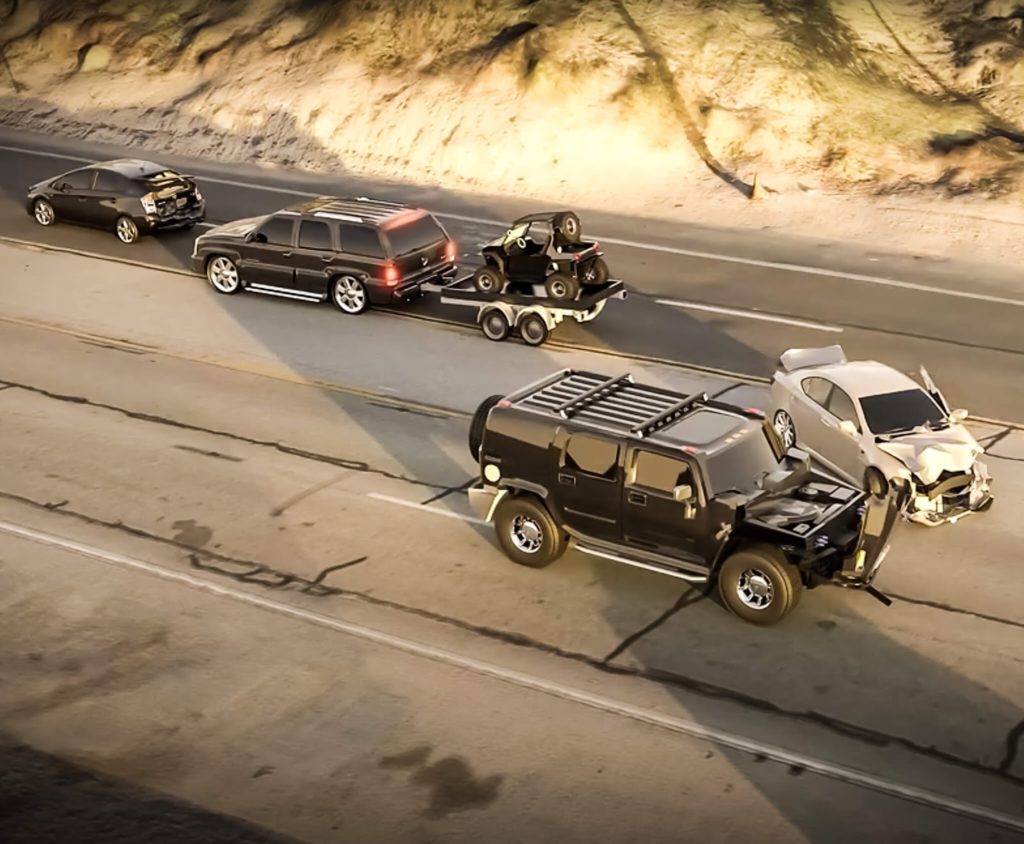
Motor Vehicle Collision Animation Sample
The other benefit of getting your graphics or animations prepared for pre-litigation? Once the case is filed and litigation officially begins, the same legal graphics used during pre-litigation can be leveraged in settlement discussions, and even trial.
Legal Graphics in Mediation & Settlement
Once mediation hearings start, the role of legal graphics changes. Instead of analyzing data and feedback, the visuals are now used to convey your case’s story to the mediator and prompt the opposing counsel to settle.
The main benefits of litigation graphics in mediation include:
- Tool for both plaintiff and defense attorneys
- Help settle your case early
- Prove/Disprove expert opinion
As 97% of civil cases are resolved before trial, influential visuals are a key factor for favorable settlements for both defense and plaintiff counsels.
Tool for both plaintiff and defense attorneys
Pre-litigation graphics mostly benefit plaintiff counsels, since the defense is generally not alerted until the case has been filed. However, in mediation and discovery, legal animation offers benefits to the defense counsel as well. A visual allows both parties to enter settlement discussions with all of their crucial information summarized into a compelling visual.
Legal graphics are a tool for both counsels to emphasize the strength of their case.
When both parties explain their case to the mediator, they can include a legal graphic in their mediation statement. This visual summary serves as an effective way for the mediator to quickly understand both counsels and assess litigation risks. If the opposing counsel does not have a visual, then the mediator can communicate your state of readiness for trial to the other party.
Help settle your case early
During the back-and-forth discussion in mediation, a legal graphic demonstrates to the opposing side that you and your client are invested. It can cause the other attorney(s) to re-evaluate their case’s positioning and discuss new terms with their client.
Armed with a compelling visual from the start of litigation holds the promise that you are prepared for trial if the opposing side does not agree to a favorable settlement. Attorneys have seen animations shorten mediation discussions to as little as one day, as described in this medical graphics case study.
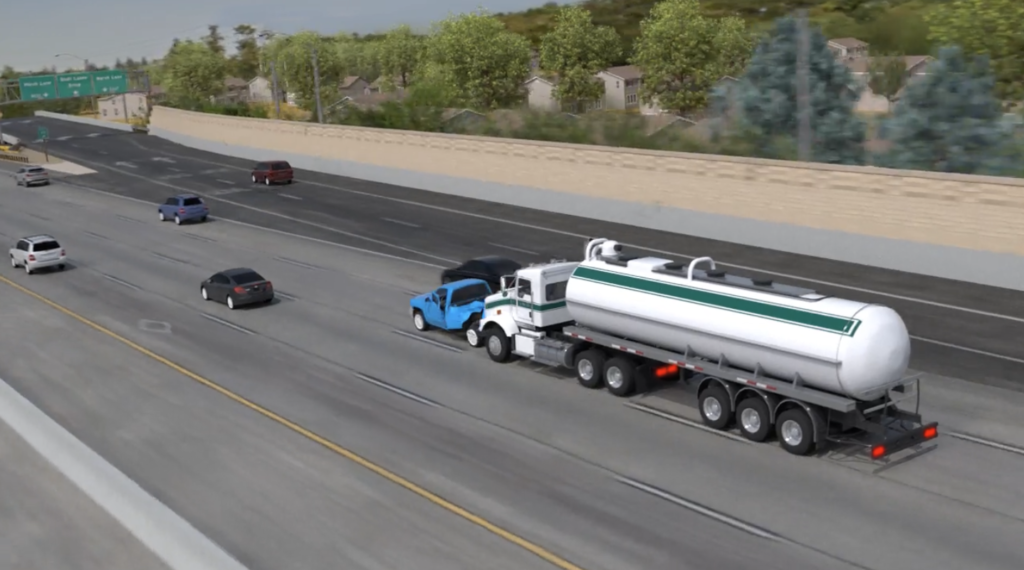
Still from Motor Vehicle Accident Animation
If the opposing side brings in their expert, then a visual can demonstrate the inaccuracy of their statements, which could also help your case settle faster.
Prove/Disprove expert opinion
During mediation, an expert can provide a deposition regarding your visuals and their opinion of what happened. Because law graphics are based on physical data, they are highly accurate, which adds credibility to your case’s story and the deposition(s). If your visual disproves the opposing counsel’s expert’s deposition using data, then settlement discussions have a higher chance of ending in your favor.
If the case cannot be settled, then it’s an opportunity for your legal graphics to highlight the key elements of your story to the jury or judge.
Legal Graphics in Trial
When a case transitions into trial, it gives you the chance to revise any legal exhibits you used to further elevate your story in your closing or opening statements. These revisions are based on feedback from your expert or the opposing counsel during mediation, and reduces the possibility of objections to its use during trial.
“Long before you plan your opening statement, start to put together the story of the case with ordinary words that make it come alive, and pull together the facts that tell the story of the wrong that needs to be set right.”
American Bar Association Journal, “Hunt for the Winning Story,” James W. Mcelhaney
During a jury trial, there are two key benefits for attorneys who present trial graphics or animations:
- Adding a compelling and credible narrative to your case
- Helping the jury or judge understand and remember your key arguments
Unlike a private settlement discussion between a neutral mediator, the outcome depends on the jury or judge, i.e., human beings who can empathize with a complex story.
Adding a compelling and credible narrative to your case
One of the keys to maximizing the chances of achieving a favorable verdict is to connect with your intended audience by emphasizing the emotional narrative of your case. If your case is packed with expert testimony, which can often be dry and uninspiring for the jury, a legal graphic can add a stimulating experience.
For example, to supplement your expert describing each step of a medical procedure, a surgery animation can help the jury or judge experience the event as if they were there.
Visuals are a compelling (and almost essential) addition to your case’s narrative.
When you add a narrative to your case, either through a graphic or an animation, your case gains a level of credibility. Conversely, if you deconstruct the opposing counsel’s trial exhibits and demonstrate how they are inaccurate, it can take away their credibility.
Here are some sample exhibits that you can use to emphasize your case’s story:
- Interactive maps & timelines
- Forensic animations
- Testimony visualization aids
- Charts or graphs
- Slide decks during opening/closing statements
For unsettled cases, trial exhibits that create a memorable story help the jury remember your case.
Helping the jury or judge understand and remember your key arguments
Everyone has endured a presentation or lecture that felt like it went on forever. Unfortunately, jurors can often experience trials in this way, such as during oral explanations of complex facts or data. And when this disconnect happens, jurors can then struggle to remember or understand key elements of your argument.
How can attorneys prevent jurors’ eyes from glazing over? Well, the average juror is accustomed to stimulating visual technology, as they see it everywhere they go. To overcome these obstacles to the jury’s boredom, attorneys can take advantage of law graphics.
“When people are instructed through auditory modality alone, and recall is subsequently tested, they recall about 10% of what they heard, in contrast to recalling 85% of information presented orally with visual aids.”
Tulsa Law Journal, “The Use of Demonstrative Exhibits at Trial”, Mary Quinn Cooper
Leveraging these visuals will have a better chance of the jury understanding and remembering your key facts. Why? The jurors’ eyes will be automatically drawn to your compelling legal graphics or animations. With their focused attention, they have a better chance of remembering and empathizing with your client.
In a six-year long study by the Cornell Law Review, over 500 jurors in the Eastern Division of the Northern District of Illinois were interviewed on what they did, and did not, like about attorney’s trial presentations.
One of the major themes uncovered was the jurors preferred when attorneys did not repeat themselves over and over. One statement explained how, “Many questions were asked in different ways but essentially meant the same thing.” Orally repeating facts can help the jury remember them, but a demonstrative visualization can repeat them in a different and engaging way.
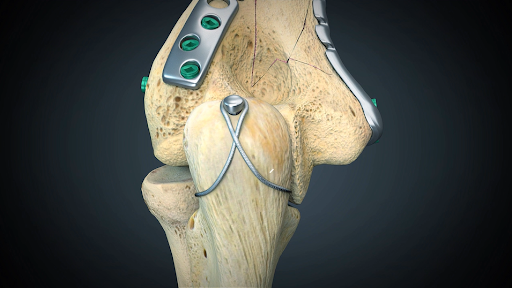
Still from Sample Medical Animation
Forensic graphic tools can be submitted as demonstrative evidence, which allows the jury to review them during deliberations. These additional chances to digest the information means their brains can process the trial exhibit as needed, aiding in memorization and comprehension.
Once the verdict has been delivered, your case’s story has ended…. Or has it?
Legal Graphics in Appeals
When appeals are filed, whether due to your actions or by the opposing counsels, you want to be as prepared as possible for the appellate court. Legal graphics offer that distinct support in appellate cases. There are two main (although not all encompassing) uses of litigation graphics in the appeals phase:
- Bolster an argument of sufficient substantial evidence
- Help the appellate court understand why the appeal was filed
Bolster an argument of sufficient substantial evidence
After a trial concludes, one counsel can file an appeal based on the argument that the outcome was not supported by substantial evidence. When this occurs, the appellate court must review the entire case’s record. The record, however, includes all trial exhibits admitted, including legal graphics or animations.
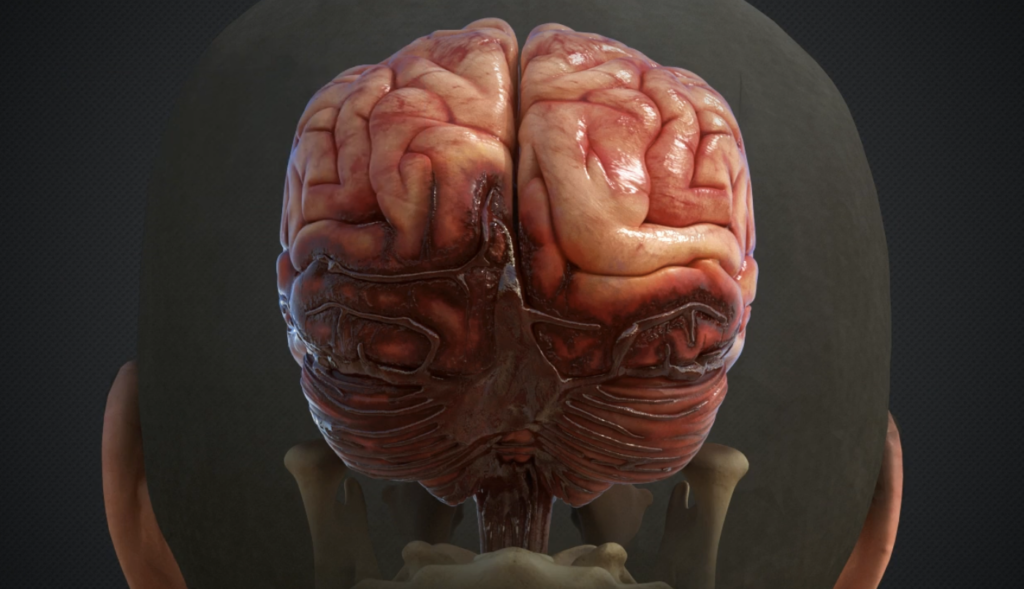
Sample Traumatic Brain Injury Animation Still
Thus, if a visual was shown during the case, it can help the accused counsel claim that there was sufficient evidence presented. And, just like how trial exhibits help the jury quickly understand your case, the same can be done for the appellate court.
Help the appellate court understand why the case was filed
When attorneys submit briefs before arguing their appeal in court, they can attach photos, diagrams, and forensic animations. These visuals help the appellate justices understand the general background of a case and how it progressed.
These explanatory exhibits also provide more emotional context than oral explanations, and can lead to a more favorable final decision. For example, a car crash animation holds more emotional power than providing a verbal description of a collision.
From pre-litigation to appeals and every stage in between, legal graphics are a powerful tool for attorneys.
Legal Graphics: Litigation’s Innovative Story-Telling Technology
With the advancement of computer technology, accurate law graphics are more attainable now than ever before. PowerPoints, paper documents, and blown up photos will always have a place in courtrooms, however, powerful legal graphics provide an advantage that can “level up” your case’s narrative.
Pre-litigation graphics can help you solidify your case’s narrative and foundation before settlement discussions start. Once a case has been filed, both plaintiff and defense attorneys can use visuals to tell the story of their client. Using visuals early in litigation demonstrates to the opposing counsel how invested you are, and helps ground your expert’s credibility.
In trial, legal graphics add a persuasive and memorable narrative to your case that appeals to a tech-savvy jury. During the appeals phase, images support your claim of sufficient evidence, and explain why your case is being appealed to the appellate court.
The power of visual storytelling is one of the best methods to help attorneys receive the best outcome for their case. So, we ask again, what really happened in your case?
Collaborate with an Experienced Forensic Animation Company
To obtain accurate and admissible litigation graphics, it’s crucial to partner with a forensic animation studio who understands how graphics can provide support in every litigation stage. These animation specialists can collaborate with you to elevate your presentation and develop a compelling visual narrative.
Interested in learning more about how legal graphics can support your case? Reach out and get a quote from our experienced animators today — or download our free eBook below.
